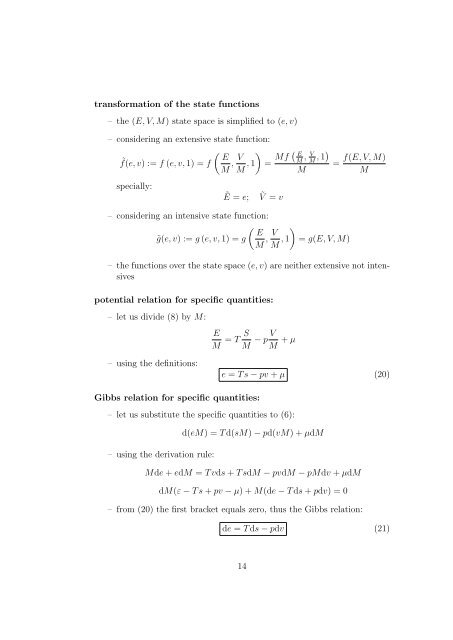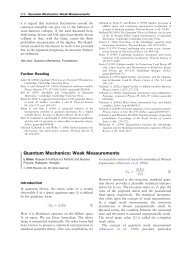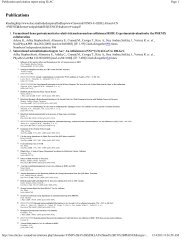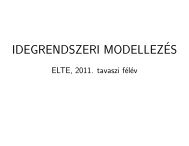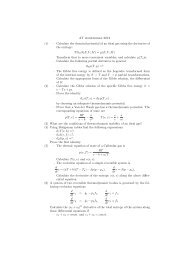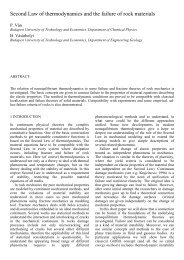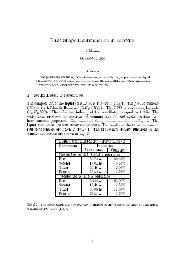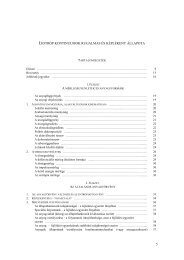Lecture Notes in Advanced Thermodynamics
Lecture Notes in Advanced Thermodynamics
Lecture Notes in Advanced Thermodynamics
You also want an ePaper? Increase the reach of your titles
YUMPU automatically turns print PDFs into web optimized ePapers that Google loves.
transformation of the state functions<br />
– the (E, V, M) state space is simplified to (e, v)<br />
– consider<strong>in</strong>g an extensive state function:<br />
˜f(e, v) := f (e, v, 1) = f<br />
specially:<br />
( E<br />
M , V M , 1 )<br />
= Mf ( E<br />
M , V M , 1)<br />
M<br />
Ẽ = e;<br />
Ṽ = v<br />
=<br />
f(E, V, M)<br />
M<br />
– consider<strong>in</strong>g an <strong>in</strong>tensive state function:<br />
( E<br />
˜g(e, v) := g (e, v, 1) = g<br />
M , V )<br />
M , 1 = g(E, V, M)<br />
– the functions over the state space (e, v) are neither extensive not <strong>in</strong>tensives<br />
potential relation for specific quantities:<br />
– let us divide (8) by M:<br />
– us<strong>in</strong>g the def<strong>in</strong>itions:<br />
E<br />
M = T S M − p V M + µ<br />
e = T s − pv + µ (20)<br />
Gibbs relation for specific quantities:<br />
– let us substitute the specific quantities to (6):<br />
d(eM) = T d(sM) − pd(vM) + µdM<br />
– us<strong>in</strong>g the derivation rule:<br />
Mde + edM = T vds + T sdM − pvdM − pMdv + µdM<br />
dM(ε − T s + pv − µ) + M(de − T ds + pdv) = 0<br />
– from (20) the first bracket equals zero, thus the Gibbs relation:<br />
de = T ds − pdv (21)<br />
14


